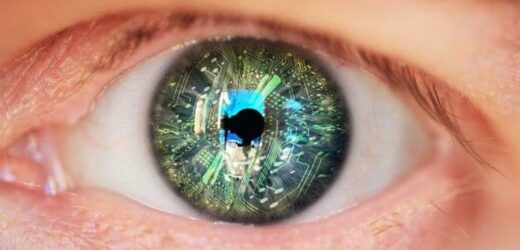Brain implant allows paralysed monkey to walk again
We use your sign-up to provide content in ways you’ve consented to and to improve our understanding of you. This may include adverts from us and 3rd parties based on our understanding. You can unsubscribe at any time. More info
Spanish scientists made the breakthrough when a brain implant directly stimulated the blind woman’s visual cortex, which reportedly allowed her to see light and shapes again. By using an “artificial retina” attached to a pair of glasses directing light in front of them, the light was then processed into electrical signals. The signals then sent to series of micro-electrodes implanted in the patient’s brain, allowing the user to “see” light picked up by the glasses.
This system was tested on a 57-year-old woman who had not seen a thing in 16 years, having been completely blind.
During the experiment, the breakthrough implant enabled her to identify shapes and silhouettes detected by the artificial retina.
The scientists wrote in the research paper published in The Journal of Clinical Investigation: “We consistently obtained high-quality recordings from visually deprived neurons and the stimulation parameters remained stable over time.”
The patient could also spot “some letters” and even “recognise object boundaries”, according to the researchers.


And the operation was reportedly completely safe.
The researchers claimed that implanting electrodes into a patient’s brain does not did affect the area of the brain around the visual cortex.
The artificial retina also did not simulate non-target neurons.
This suggests that the system is a safe one to use and is as unobtrusive as a brain implant could be.
The system also required a relatively low level of electrical activity when compared to other neural implant arrays.
The artificial retina was removed from the woman’s brain after six months.

While more research is needed before the technology can be rolled out on mass, early indicators are promising.
It could be a big step forward in fixing visual impairments and represents a breakthrough in the field.
But this is not the first time a blind patient has been treated with a revolutionary technique to try and restore sight.
In May 2021, a blind man had his sight partly restored after a form of gene therapy used pulses of light to control the activity of nerve cells.
It was the first successful demonstration of so-called optogenetic therapy in humans.
DON’T MISS
Fourth wave sparks Germany panic as Covid cases soar [INSIGHT]
Disease outbreak declared as two new variants of deadly bacteria found [REVEAL]
US sends China hypersonic missile threat as Taiwan tension soars [REPORT]


This method involved the use of optogenetics as a clinical treatment, which involved modifying nerve cells, or neurons, so that they fire electrical signals when they’re exposed to wavelengths of light.
This gives neuroscientists the power to accurately control neuronal signalling within the brain and elsewhere.
According to the NHS, there are almost two million people living with sight loss in the UK.
Around 360,000 of those are registered as blind or partially sighted.
Source: Read Full Article


